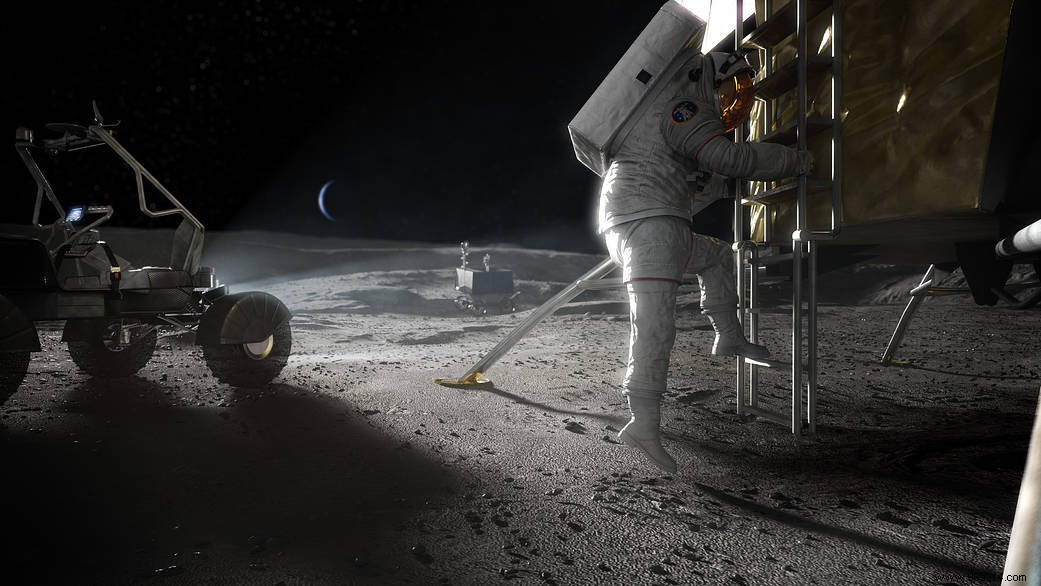NASA is still considering the ideal landing site for its next manned mission to the Moon, as well as that of its future base camp. In particular, this area will have to favor access to sunlight while bringing the astronauts closer to the different sources of water ice.
As everyone knows, NASA plans to set foot on the Moon as early as 2024 as part of its Artemis program . New President-elect Joe Biden may soon loosen that timeline and give the U.S. agency an extra year or two to achieve that goal. However, in the meantime, the program is still running its course. Among the many technical challenges still to be met, there are also many questions, including that of the landing place. And given the needs of the Artemis program, this choice will not be easy.
To date, we have only one certainty:future lunar explorers will land at the lunar south pole . This is obviously no coincidence. The polar regions of the Moon indeed contain a precious resource:frozen water . And remember that the detection and recovery of this water is a key scientific objective of the Artemis project. Eventually, it could be processed for consumption or to make rocket fuel.
Nevertheless, the area is large. So what are the different criteria to take into account?
Given this need for water, mission planners are currently evaluating possible landing spots and base camp locations. And there, everything is a question of balance.
As NASA explains in a recent press release, the chosen destination should indeed have enough sunlight so as to be able to supply the base camp, but also allow easy access to areas rich in water ice . Finally, ideally, this location should also offer moderate temperature variations.
It just so happens that the Moon's rugged topography should be able to provide such a location. NASA thinks it might be possible to land along the rim of an impact crater .
From there, the astronauts will be able to benefit from the light of the Sun. Remember that unlike the Earth, the Moon is very slightly inclined (1.5 degrees on its axis). Also, for astronauts standing in the polar regions, the height of the Sun would remain largely the same over the course of a day. As NASA puts it, "if a person stood on a hill near the lunar south pole during the day, at any time of the year, they would see the sun move across the horizon, brushing the surface like a flashlight on a table “.
On the other hand, this location on the edge of a crater would also allow access to the perpetually shaded areas inside this structure, where is the lunar water ice. It remains to be determined which border will suit best.

It should also be noted that the landing point should be reasonably far from the main activity area. Indeed, the thrusters of the lander will project enormous quantities of materials in the form of dust and rocks. The craft's propellants will also contaminate the immediate area. This is why the base camp, which will include a habitat and solar panels, must be located at least 800 meters from the landing site .
Finally, this same landing point should be located on the side of the Moon facing the Earth, so as to facilitate communications with ground controllers.